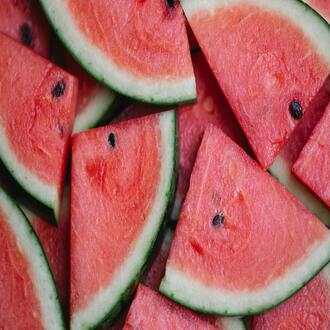Transcription Anisakis allergens
Anisakis is a genus of parasitic nematodes whose complex life cycle infests crustaceans, marine cephalopods, marine mammals and fish. They can affect human health by causing parasitic infections and/or allergic reactions.Parasitic infections are caused by eating raw or semi-processed fish contaminated with live anisakis larvae. These larvae can penetrate the mucosa of the digestive tract and cause acute gastrointestinal symptoms, this disorder is known as anisakidosis, and can affect both allergic and non-allergic individuals.Allergic reactions are caused by the consumption of fish infested with anisakis larvae. These reactions are a health problem that affects many people, although they often do not associate the symptoms with the true cause, because they attribute the disorders to allergic reactions to the fish itself. Characteristics of allergic reactions to anisakis:
- Anisakis larvae that infest humans by ingesting fish or mollusks, are in the l3 larval stage.
- The anisakis species that most frequently causes parasitosis and allergy in humans is anisakis simplex.
- The anisakis larvae that infest humans, fish and marine cephalopods can be seen with the naked eye. They are white, rounded in section, with a cylindrical and elongated body, measuring 2 to 3 cm.
- Humans are considered accidental hosts of the larvae l3, since their stay in the human organism is not necessary to complete their development and they cannot reproduce.
- The presence of l3 larvae of anisakis simplex is currently detected in most of the marine species consumed in Spain, between 25% and 80% of the fish caught by extractive fishing is infested.
- Humans can become ill when infested with live larvae l3 of anisakis, having consumed fish or cephalopods, raw or undercooked, this infestation is called anisakiasis or anisakidosis. The main acute symptoms are gastrointestinal, such as vomiting, nausea, abdominal pain and diarrhea. Symptoms may occur within 24 to 72 hours after ingestion. Anisakiasis can affect both allergic and non-allergic individuals.
- Anisakis cause immunoglobulin E-mediated hypersensitivity allergic reactions in humans, causing symptoms such as angioedema, urticaria and even anaphylaxis.
It is not fully defined whether it is necessary for the larva to be alive for the allergic reaction to occur, but there is evidence of sensitized patients, after having consumed well-cooked fish, even canned fish, which cause the death of the larvae.
Symptoms of parasitism and allergic infections can occur at the same time, these cases are called gastro-allergic anisakiasis. The population most affected by anisakis allergy is the adult population. The incidence of anisakis allergy is much higher in regions where raw fish consumption is common.
There is cross-reactivity between anisakis and other nematodes, arthropods, mites, cockroaches and shrimp. Although ingestion of the larvae is the main cause of allergy, occupational allergy cases of asthma and/or conjunctivitis caused by inhalation of anisakis simplex antigens have been described. Allergenic components in anisakis: Anisakis allergy is produced by different allergens, with a great individual variation of the response. Nine anisakis simplex allergens have been described, divided into two groups: one of anisakis simplex allergens of somatic origin and the other of anisakis simplex allergens of secretion/excretion.
Anisakis simplex allergens of somatic origin: Within this group are ani s 2 and ani s 3, with ani s 2 standing out as one of the allergens with the greatest cross-reactivity with paramyosins from other nematodes, trematodes and arthropods.
Anisakis simplex secretion/excretion allergens: Within this group are ani s 1; ani s 4; and the remaining ones: ani s 5; ani s 6; ani s 7; ani s 8; and ani s 9 In this group, ani s 1 stands out, recognized for being the cause of 86% of all anisakis allergies. Ani s 4 also stands out as the cause of 27% of sensitized patients and is involved in a large number of anaphylactic allergic responses.
Food products that may contain anisakis:
- Surimi.
- Pizzas.
- Paella preparations.
- Chickens fed with fish meal.
- Products enriched with omega 3 from fish.
- Gelatin.
- Broths and soups.
Recommendations for people allergic to anisakis:
- Those allergic to anisakis should consume marine fish frozen for at least 72 hours below -20°c.
- Avoid eating raw or undercooked fish.
Avoid consuming fish processed by culinary methods that do not kill the parasite, such as:
- Baked at less than 60°c.
- Smoked fish.
- Salted fish.
- Pickles.
When eating out, avoid dishes containing fish, if you are not sure of the processing methods used.
Do not go to restaurants specialized in seafood products, due to the risk of contamination of utensils and surfaces with allergenic substances from fish infected with anisakis.
anisakis




